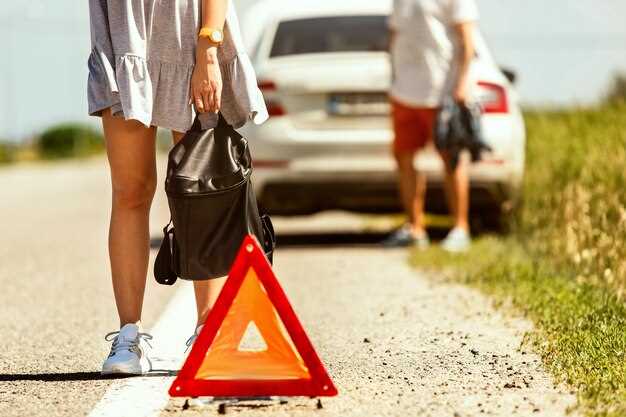

In today’s fast-paced world, the ability to manage emergencies while riding your vehicle is crucial. Unexpected situations can arise at any moment, from sudden mechanical failures to accidents or adverse weather conditions. Knowing how to effectively respond to these challenges not only ensures your safety but also the safety of others on the road.
Preparation is Key. Understanding the common types of emergencies you might face while driving is the first step in effective management. Familiarizing yourself with emergency procedures and equipping your vehicle with essential tools can drastically improve your response time and decision-making during a crisis.
When these emergencies occur, remaining calm and collected is vital. Panic can cloud your judgment, making it difficult to assess the situation accurately. This article aims to guide you through the essential strategies for managing emergencies, emphasizing the importance of preparation, situational awareness, and appropriate response techniques.
Preparing for Common Roadside Emergencies
Being adequately prepared for roadside emergencies can significantly reduce stress and enhance safety while driving. Here are essential steps you can take to be ready for the most common scenarios.
Flat Tires: Ensure you have a spare tire, jack, and lug wrench in your vehicle. Regularly check the condition of your spare to make sure it is properly inflated. Familiarize yourself with the process of changing a tire before an emergency arises to save time and avoid panic.
Engine Overheating: Carry extra coolant and water in your vehicle. Regularly inspect your engine’s cooling system, including hoses and the radiator, to prevent overheating issues. If your engine does overheat, turn off the engine immediately and wait for it to cool down before attempting to check the coolant level.
Dead Battery: Invest in a portable jump starter or ensure you have jumper cables in your trunk. It’s important to know how to jump-start a battery properly. Regular battery maintenance can also help you avoid this situation altogether.
Running Out of Fuel: Always keep an eye on your fuel gauge and refuel when it is convenient. Consider keeping a fuel canister in your vehicle for emergencies. Familiarize yourself with the nearest gas stations along your regular routes.
Getting Stuck: Carry items that can help if your vehicle becomes stuck, such as sand, kitty litter, or traction mats. A shovel can also be beneficial. Before driving in adverse conditions, check local weather reports to avoid unnecessary risks.
Emergency Kit: Assemble a roadside emergency kit containing a first aid kit, flashlight, batteries, non-perishable snacks, blankets, and a basic toolkit. Make sure to periodically check and refresh the supplies in your kit.
By taking these proactive measures, drivers can enhance their preparedness for common roadside emergencies, ensuring safer and more confident travels.
Steps to Take During a Vehicle Breakdown

When faced with a vehicle breakdown, your immediate response is crucial for safety and effective problem resolution. First, ensure you are in a safe location. If possible, steer your vehicle to the shoulder of the road or a nearby parking lot. Turn on your hazard lights to alert other drivers of your situation.
Once you have stopped safely, assess the situation. If it is safe to do so, exit the vehicle to inspect for visible issues such as flat tires, spilled fluids, or smoke. Avoid standing in the roadway and move to a safe distance from the vehicle.
If you are unable to identify the problem or if the situation is unsafe, call for assistance. Use your mobile phone to contact roadside assistance, a tow service, or a trusted mechanic. Provide them with your exact location and a description of the issue.
While waiting for help, stay inside your vehicle if you are on a busy road, as it offers protection. Keep your seatbelt fastened and remain vigilant of your surroundings. If conditions allow, you can use this time to inform family or friends about your situation.
Once help arrives, follow the instructions of the service personnel carefully. If your vehicle needs to be towed, ensure that all personal belongings are secured. After the breakdown has been resolved, assess the situation fully before continuing your journey.
How to Handle Accidents and Injuries on the Road

Experiencing an accident while riding your vehicle is a stressful situation that demands immediate and effective action. It is crucial to stay calm and follow essential steps to manage the aftermath efficiently.
Assess Safety: First, ensure your safety and the safety of others. If possible, move your vehicle to a safe location away from traffic. Turn on hazard lights to alert other drivers and prevent further incidents.
Check for Injuries: Evaluate yourself and any passengers for injuries. If anyone is hurt, call emergency services immediately. Provide them with accurate information about the location and the nature of the injuries.
Contact Emergency Services: Regardless of the severity of the accident, it is advisable to notify the police. They can help document the incident and file an official report, which may be necessary for insurance claims.
Exchange Information: Gather contact details and insurance information from all drivers involved. This includes names, phone numbers, license plates, and insurance policy numbers. Document the details accurately.
Take Photos: Capture photographs of the accident scene, vehicle damages, and any visible injuries. These images can serve as crucial evidence when dealing with insurance claims and legal matters.
Do Not Admit Fault: Avoid discussing fault or liability at the scene. Stay focused on safety and gathering information. Statements made in the heat of the moment may complicate matters later.
Notify Your Insurance Company: Report the accident to your insurance provider as soon as possible. Provide them with the gathered information and any supporting evidence. Follow their guidance regarding the claims process.
Seek Medical Attention: Even if you feel fine after the accident, some injuries may not be immediately apparent. It is advisable to consult a healthcare professional for a thorough examination.
Follow Up: Keep track of any medical treatments and document all related expenses. Maintain communication with your insurance company and follow through with any required paperwork or assessments related to the accident.
By taking these steps, you can manage the aftermath of an accident more effectively, ensuring safety, proper documentation, and a clearer path toward recovery.





